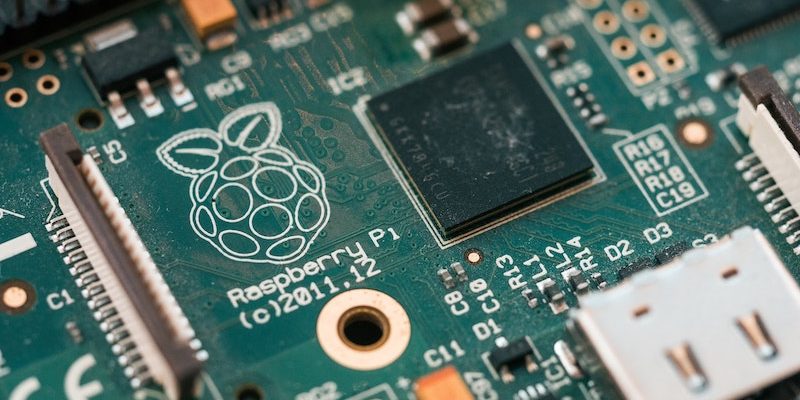Unsere vernetzte Welt verstehen

Freie Technologien für die ganze Welt – warum Open-Source-Hardware von öffentlichem Interesse ist
Open source hardware (OSH) is an essential approach to public interest technology, not unlike well-maintained infrastructure. To guide the development of OSH, policymakers and companies can learn from the success of open source software and from the criticism of overly dominant web platforms. While OSH is a field with a range of challenges, we see tremendous potential for societal benefits, but it also needs support.
Open source is making its way through the spheres of public life and business. Those that stand out are not only the well-known examples from the software fields but also increasingly complex hardware products like autonomous driving cars (LocalMotors), 3D printers (RepRap), and all kinds of IoT devices and computers (Raspberry Pi).
The advantages of open source knowledge production of physical products have become particularly evident in challenging times, and Open Source Hardware (OSH) is seen as a way to cope with the COVID-19 crisis. For example, innovative products like respiratory equipment could be developed in a collaborative way with a worldwide community of experts and companies (Pearce, 2020). The knowledge, construction plans and instructions thus produced have been in turn made available as a public good and can be produced by anyone who needs it in a decentral and more sustainable way (see also the OxyVita: Emergency Ventilator).
Learning from other fields
OSH is an emerging field. Hence, to further support its development, we need to look for insights from adjacent fields. The obvious one is free/libre and open source software (FLOSS). From the world of FLOSS, we know that openness is socially and economically sensible. Far from being of interest mainly to hobbyists, open source software powers large parts of the internet’s backbone and is thus a big contributor to industry and infrastructure alike. The other area worth studying is the web economy, especially the so-called GAFAM platforms that dominate the internet: Google, Amazon, Facebook, Apple, Microsoft. On the web, network effects create a dynamic that strongly favours winner-takes-all outcomes – in other words, monopolies or outcomes that have effects comparable to monopolies. No question, all these companies are innovative, but they also have consolidated such power and huge market shares that they are now facing investigation for antitrust, freedom of speech, and liability concerns.
To guide OSH going forward, it is crucial to learn both from FLOSS’s positive potential and the risks we are seeing develop in real time around the GAFAM platforms. With the General Data Protection Regulation, Europe has shown a global ambition in protecting consumer rights and competitive access to markets. Similarly, we are at a juncture where it is possible to provide a policy framework for the future of open source hardware to guide this emerging field towards positive societal impacts. Such a focus on OSH as public interest technology (PIT) – technology that contributes to societal well-being no matter if the creators are commercial or non-commercial actors – allows us to nudge the development of a young field that will only grow in importance towards realising its full potential while staying clear of at least the most obvious risks. Getting this right, now, is bound to pay positive societal dividends for decades to come.
OSH business models, network effects and the question of marginal costs
Before we present further ideas to foster OSH development, we would like to briefly mention central definitions and also show conceptually why open source benefits both society and the economy. On the one hand, the understanding of OSH is focused and clear as it is defined as “hardware whose design is made publicly available so that anyone can study, modify, distribute, make, and sell the design or hardware based on that design” (OSHWA, 2020). On the other hand, openness includes a spectrum of issues that could be ultimately made open or closed (Bonvoisin & Mies, 2018). For example, while it is common for design files to be released as freely available and most projects allow commercial reuse, some business models avoid such open use (see also the Creative Commons license system).
We have also learned from the FLOSS field that companies can lower transaction costs by using open source principles, i.e. they can more easily organise cooperation amongst all the parties who have an incentive to contribute to a particular software if it is open (Benkler, 2002). Additionally, there are a variety of business models which allow FLOSS providers to create value. Well-documented examples include the sale of professional services that complement a freely available offering, as with Red Hat, or the sale of proprietary products such as the MATLAB programming environment that complement an open resource, or the use of dual licensing as with the MySQL database, which may be used privately for free but must be paid for commercially.
It is worth considering that these positive effects refer to information goods or digital goods, i.e. goods that can be distributed over networks without significant marginal costs, of which we can make countless perfect copies and which can be made available immediately anywhere in the world (Benkler, 2002; McAfee & Brynjolfsson, 2018). These information goods indeed initiated the triumph of platforms as an economic form of organisation. Due to their characteristics, they induce three self-reinforcing effects: First, a digital good can have enormous scaling effects. Once produced, it can be sold again and again without cost. Second, if you sell a digital good, you can integrate additional goods or services and thus generate lock-in effects. Customers naturally shy away from the costs of changing platforms once they have invested significant time or money into one. And third, a growing number of users of a digital good often leads to network effects, because these users can condition attractive complementary goods or become direct partners in the use of the focal good. In the case of digital goods, these three effects interact so strongly that the valuation of the much-discussed GAFAM companies seems to have no limits. But, lawmakers and politicians have begun to set their sights on companies trafficking in information goods because they have grown into de facto monopolies.
In the case of hardware, all of the above-mentioned effects also apply, but to a lesser degree. The marginal costs of hardware are far from zero. We need machine time, material and labour to produce hardware – but these costs are constantly being driven down and not reliant upon massive companies for scaled production. Even more importantly, the production of a physical good, even based on flawless digital designs, usually requires extensive human expertise. Hardware can also have network effects, but direct network effects from sharing are only generated at the software level. Further, indirect network effects from complementary goods are usually weaker because hardly anyone has any use for a library of hardware, in the way that many people appreciate a library of music or films or even apps. Only the lock-in effects for hardware can be compared to those of digital goods one-to-one. So, if a hardware can absolutely have the potential to become the market standard, it should at least be open source and not dominated by corporate monopolies. Making such hardware open source would boost both scalability and the network effects far beyond a proprietary, closed product: distribution can be driven by usage not production, and scarcity couldn’t be used to drive pricing (the monopoly’s greatest tactic). The lock-in effects are thus obviously also better for open source, as it is driven by buy-in and opt-in to a wider variety of hardware than can be offered by a few monopoly holders.
Open source hardware as an organising principle in companies
Open source hardware is associated with new transaction costs, however. The documentation and accessible provision of plans are costly and require expertise. In addition, the organisation of a meaningful exchange between external contributors requires experience in product creation and daily interaction with communities. On the other hand, open source can support the search for potential partners and the negotiation of the distribution of incentives. The use of external open resources can save development costs and accelerate processes. In addition to the sale of the original hardware, a variety of business models are available to companies for the appropriation of value (Pearce, 2017). Finally, open source hardware also enables manufacturers of physical goods, in many cases, to initiate the positive feedback effects similar to those of digital goods for themselves.
What policymakers need to do for open source hardware
OSH is a powerful principle that is capable of revolutionising hardware innovation and production. Yet, unlike in the software sector, we cannot rely solely on digital market principles to lead to a self-reinforcing growth of such offerings. Instead, we need well-considered support and incentives for all those who work with open source hardware.
Policymakers need to understand that open sourcing hardware can attract new customers and collaborators and that it can be turned into value in working business models. But, just like the development of hardware, the publishing of plans for hardware also implies an investment for companies and communities. Since it is in the public interest to have a wealth of open source hardware available, we need to support the effort for open sourcing of hardware. This can take the form of a combination of training for employees, financing for projects or professional support from experts. One key aspect to consider is funding: where the traditional investment ecosystem fails, as it has so far in open source hardware, alternative types of funding are required. Also, experts are starting to argue that public procurement should prefer solutions that are open source to minimize proprietary lock-in and lack of transparency. To extend these means, we need to explore and better understand the ways through which we can support OSH. For policymakers across Europe, this means creating a policy framework that optimises for realising the best potentials that OSH has to offer: not merely a profitable European industry in this space but also contributions towards resilience, sustainability, consumer protection and geopolitical considerations. European, national and regional funds are all called for – and they should focus on ecosystem approaches supporting both commercial and civil society actors.
As this article has shown, the breadth of things that fall under the umbrella of OSH is impressive. What open source hardware is depends very much on context, and so do the relevant implications. Open source hardware is not – not yet, at least – as successful and prominent as its software counterpart. It is a field much younger, with higher barriers to entry and more unknowns as of today. So there are no silver bullets, no one-size-fits-all approaches here. However, the potential of OSH is enormous, and we need to make decisions today to allow it to unfold. Waiting for the market to solve this is bound to lead to sub-optimum outcomes. We need to learn from the GAFAM dilemma and be proactive about shaping this field to produce socially desirable results.
Peter Bihr is managing director of The Waving Cat, a boutique research and strategic advisory firm built around the mission to align emerging technologies and citizen empowerment. He works at the intersection of technology, governance, policy and social impact — with foundations, public and private sector. He co-founded ThingsCon, a non-profit that advocates for responsible practices in IoT.
Stephan Bohn is a postdoc at HIIG. He has a PhD in organisation studies from the Friedrich Schiller University Jena, Germany. For his dissertation, Stephan studied the implementation of management and sustainability concepts in tech companies. He was a fellow of the Transatlantic Doctoral Academy on Corporate Responsibility, a guest researcher at the WZB Berlin and WU Vienna and postdoc at the Freie Universität Berlin and Scientific Network “Temporary Organizing”. Besides his focus on organisational change, his papers and projects are about institutional change, legitimacy and (disruptive) technologies in various areas, especially digitalisation and crowdsourcing, open source, the digital music market, and sustainable technologies.
Hendrik Send is a professor of business administration, with a focus on marketing, at the Anhalt University of Applied Sciences. At HIIG, he is an associate researcher investigating the effects of artificial intelligence on knowledge work for the German Federal Ministry of Labour. His research topics are digital innovation and user behaviour in the digital world. Previously, he was head of research and consulting at the Institute of Electronic Business Berlin and did his doctorate at the University of St. Gallen on innovation communities and idea generation.
References
Benkler, Y. (2002). Coase’s Penguin, or, Linux and ‘The Nature of the Firm’. The Yale Law Journal, 112(3), 369-446.
Bonvoisin, J., & Mies, R. (2018). Measuring Openness in Open Source Hardware with the Open-o-Meter. Procedia CIRP, 388-393.
McAfee, A., & Brynjolfsson, E. (2018). Machine, platform, crowd?: Harnessing our digital future. WW Norton & Company.
OSHWA (2020). Open Source Hardware (OSHW) Statement of Principles 1.0. https://www.oshwa.org/definition.
Pearce, J. M. (2017). Emerging Business Models for Open Source Hardware. Journal of Open Hardware, 1(1), 1-14.
Pearce, J. M. (2020). A review of open source ventilators for COVID-19 and future pandemics. F1000Res, 9(218).
Dieser Beitrag spiegelt die Meinung der Autorinnen und Autoren und weder notwendigerweise noch ausschließlich die Meinung des Institutes wider. Für mehr Informationen zu den Inhalten dieser Beiträge und den assoziierten Forschungsprojekten kontaktieren Sie bitte info@hiig.de

Jetzt anmelden und die neuesten Blogartikel einmal im Monat per Newsletter erhalten.
Offene Hochschulbildung
KI am Mikrofon: Die Stimme der Zukunft?
Von synthetischen Stimmen bis hin zu automatisch erstellten Podcast-Folgen – KI am Mikrofon revolutioniert die Produktion digitaler Audioinhalte.
Haben Community Notes eine Parteipräferenz?
Dieser Artikel analysiert, ob Community Notes Desinformation eindämmen oder ob ihre Verteilung und Bewertung politische Tendenzen widerspiegeln.
Wie People Analytics die Wahrnehmung von Fairness am Arbeitsplatz beeinflusst
People Analytics am Arbeitsplatz kann die Beziehung und das Vertrauen zwischen Mitarbeitenden und Führungskräften beeinflussen.





